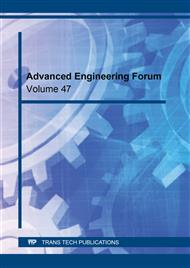[1]
ASME 17.1-2016/CSA B44-16, Safety Code for Elevators and Escalators.
Google Scholar
[2]
EN 81-20:2020, Safety rules for the construction and installation of lifts - Lifts for the transport of persons and goods - Part 20: Passenger and goods passenger lifts.
DOI: 10.3403/30251718
Google Scholar
[3]
EN 81-50:2020, Safety rules for the construction and installation of lifts - Examinations and tests - Part 50: Design rules, calculations, examinations and tests of lift components.
DOI: 10.3403/30251721u
Google Scholar
[4]
X. Arrasate, S. Kaczmarczyk, G. Almandoz, J.M. Abete, I. Isasa, The modelling simulation and experimental testing of the dynamic responses of an elevator system, Mech Syst Signal Process, 42 (2014) 258-282.
DOI: 10.1016/j.ymssp.2013.05.021
Google Scholar
[5]
I. Herrera, H. Su, S. Kaczmarczyk, Investigation into the damping and stiffness characteristics of an elevator car system, Appl Mech Mater, 24-25 (2010) 77-82.
DOI: 10.4028/www.scientific.net/amm.24-25.77
Google Scholar
[6]
G. Dimitrios, I. Chatziparasidis, N.S. Sapidis, Dynamic and structural integrity analysis of a complete elevator system through a Mixed Computational-Experimental Finite Element Methodology, Eng Struct, 160 (2018) 473-487.
DOI: 10.1016/j.engstruct.2018.01.018
Google Scholar
[7]
P. Lonkwic, Optimisation of the Lift Carrying Frame Construction by Using Finite Element Method, Adv Sci Tech Res J, 12,4, (2018) 207-215.
DOI: 10.12913/22998624/100499
Google Scholar
[8]
G. Boscato, E. Reccia, A. Cecchi. Non-destructive experimentation: Dynamic identification of multi-leaf masonry walls damaged and consolidated, Compos B Eng, 133 (2018) 145–165.
DOI: 10.1016/j.compositesb.2017.08.022
Google Scholar
[9]
G. Boscato, C.B. de Carvalho Bello, A. Cecchi, Multi-leaf masonry walls: Load transfer mechanisms sensitivity to mechanic and geometric parameters, Struct, 31 (2021) 540-557.
DOI: 10.1016/j.istruc.2021.02.006
Google Scholar
[10]
Y.A. Onur, C.E. İmrak, Reliability analysis of elevator car frame using analytical and finite element methods, Build Serv Eng Res Technol, 33 (2012) 293-305.
DOI: 10.1177/0143624411413168
Google Scholar
[11]
F. Lu, Y. Bao, X.G. Zhou, Y.J. Wang, Based on SolidWorks COSMOS 2.5 Tons, 4 m•s-1 High Speed Elevator Car Frame's Finite Element Analysis, Adv Mater Res, 510 (2012) 298-303.
DOI: 10.4028/www.scientific.net/amr.510.298
Google Scholar
[12]
P. Lonkwic, Optimisation of the Lift Carrying Frame Construction by Using Finite Element Method, Adv Sci Technol Res J, 12 (2018) 207-215.
DOI: 10.12913/22998624/100499
Google Scholar
[13]
EN 10025:2004, European Standards for Structural Steel.
Google Scholar


